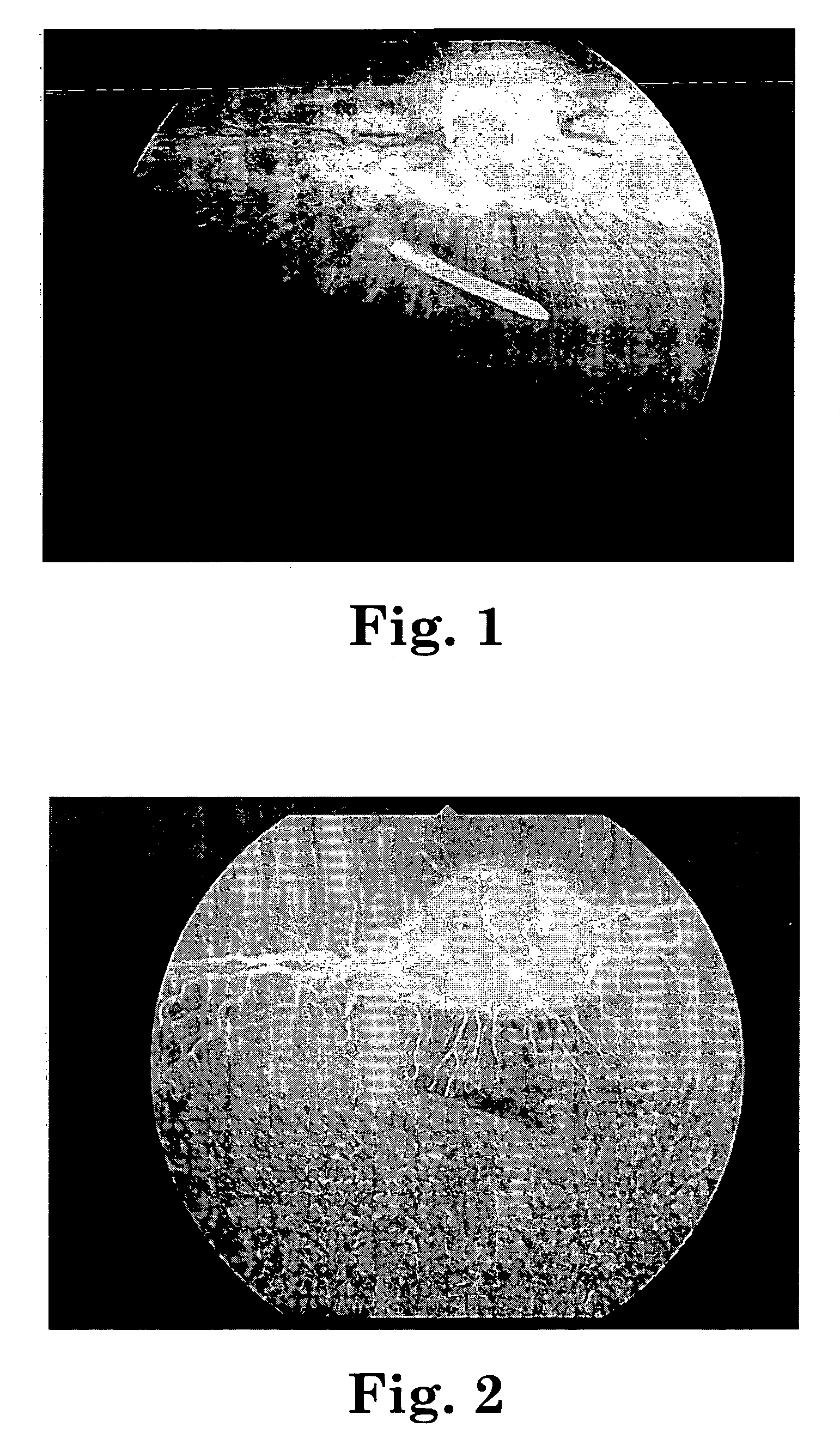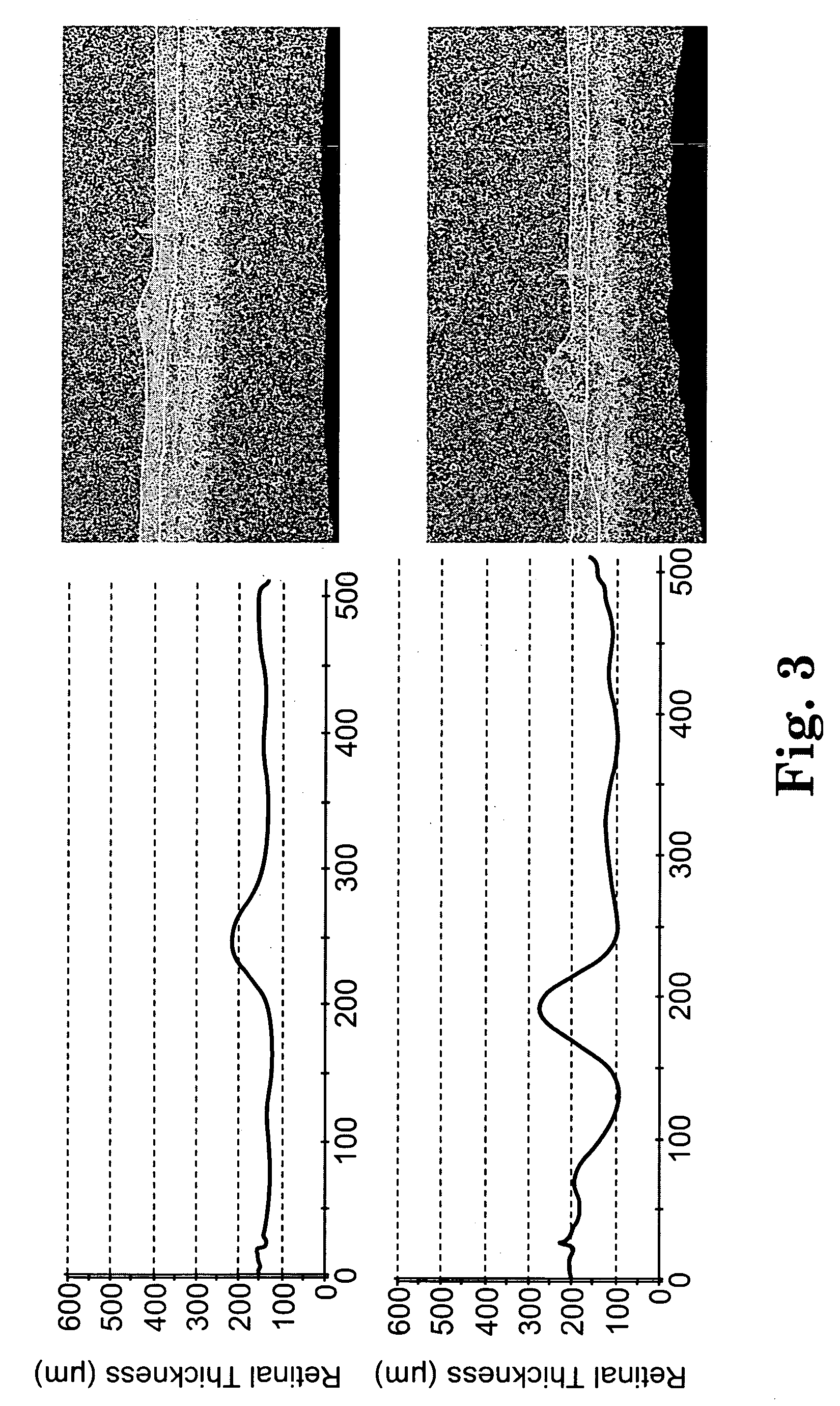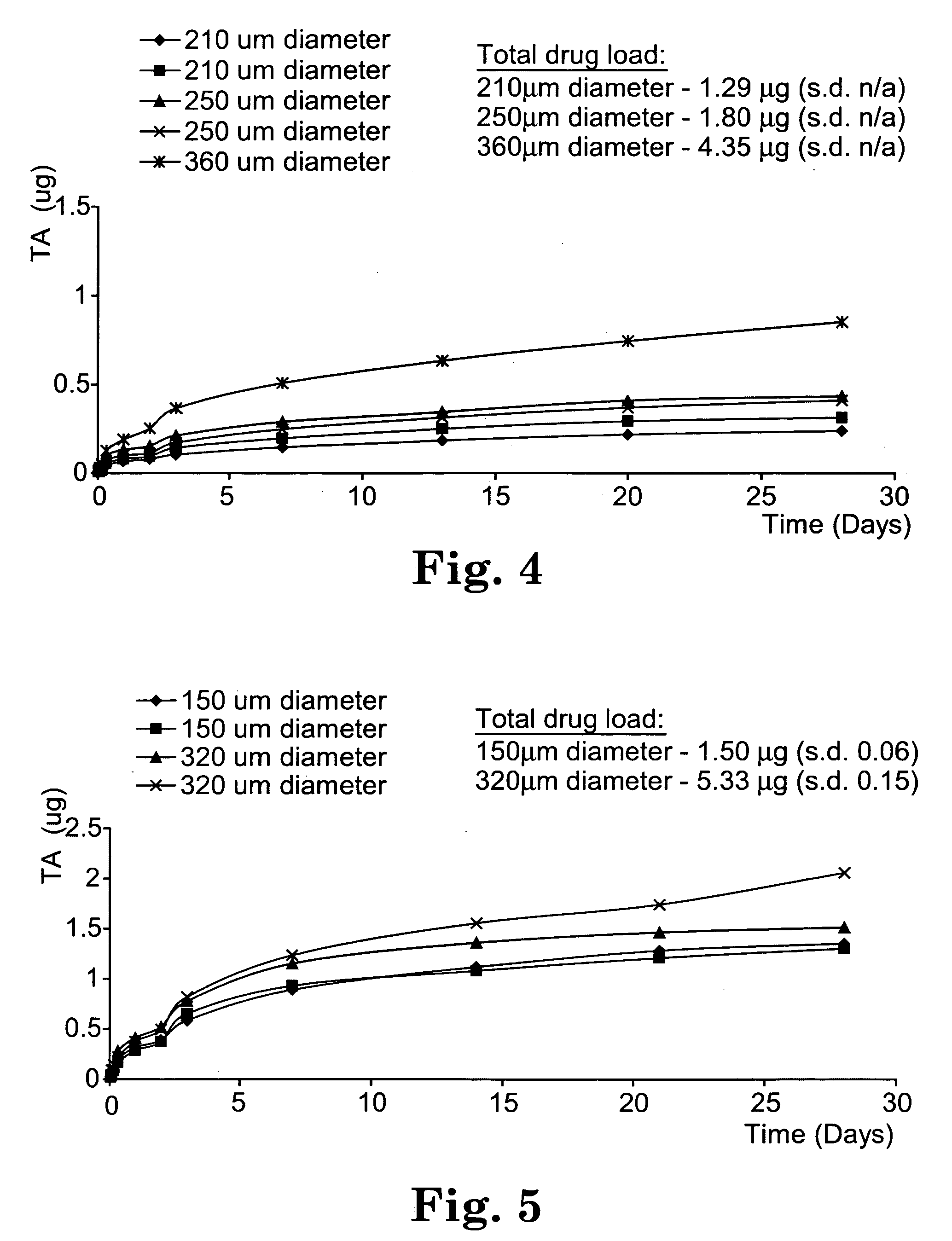Sustained release implants and methods for subretinal delivery of bioactive agents to treat or prevent retinal disease
a technology of bioactive agents and implants, applied in the field of sustained release implants and to methods for treating eyes, can solve the problems of ineffective treatment, inability to achieve specific therapy, and inability to achieve simple or inexpensive treatment, so as to prevent the progression of the condition
- Summary
- Abstract
- Description
- Claims
- Application Information
AI Technical Summary
Benefits of technology
Problems solved by technology
Method used
Image
Examples
example 1
Materials Used:
[0168] Poly(caprolactone) (Average Mw 80,000, [—O(CH2)5CO—]n, Melt index 125° C. / 0.3 MPa, Sigma Aldrich Biochemicals, St. Louis, Mo.) [0169] Triamcinolone acetonide (TA) (Purity 99%, Mn 434.5, C24H31FO6, Sigma Aldrich Biochemicals, St. Louis, Mo.) [0170] Prednisolone Purity 99%, C21H28O5, Mn 360.5, Sigma Aldrich Biochemicals, St. Louis, Mo.) [0171] Chloroform (purity 99.8%, CHCl3, A.C.S. spectroscopic grade, Sigma Aldrich Chemicals) [0172] Ether (purity 99%, Mn 74.12, (C5H5)2O A.C.S. reagent, Sigma Aldrich Chemicals) [0173] Balanced salt solution (Sterile, preservative free, Akorn, Inc., Somerset, N.J.) [0174] Bovine serum albumin (Molecular biology grade, Sigma Aldrich Biochemicals, St. Louis, Mo.)
Abbreviations: [0175] PCL: poly(caprolactone) biodegradable implant [0176] TA: triamcinolone [0177] PCL / TA: biodegradable triamcinolone loaded poly(caprolactone) implants
Implant Preparation:
[0178] The implants used in the example were prepared as follows. PCL was sol...
example 2
[0211] All procedures abided by the Guide for the Care and Use of Laboratory Animals, the USDA Animal Welfare Regulations (CFR 1985) and Public Health Service Policy on Humane Care and Use of Laboratory Animals (1996) and the Institution's policies governing the use of vertebrate animals for research, testing, teaching or demonstration purposes.
[0212] Seven pigmented rabbits (J1-J7) underwent standard pars plana vitrectomy, and insertion of a drug delivery device into the subretinal space. The animals were anesthetized with an intramuscular injection of 0.3 mL of ketamine hydrochloride (100 mg / mL; Fort Dodge Lab., Fort Dodge, Iowa) and 0.1 mL of xylazine hydrochloride (100 mg / mL; Miles Inc, Shawnee Mission, Kans.) per kilogram of body weight. Pupils were dilated with 1 drop each of 2.5% phenylephrine and 1% tropicamide. A 3-mm peritomy was made at the superotemporal and superonasal quadrant of the right eye. Sclerotomies were created with a 20-gauge microvitreoretinal blade 1 to 2 ...
example 3
Materials Used and Abbreviations:
Core:
[0219] NIT: 80 μm etched Nitinol wire, commercially available from Nitinol Devices and Components (Freemont Calif.).
Bioactive Agent: [0220] RAP: Rapamycin, commercially available from LC Laboratories, Woburn Mass.
Polymers: [0221] pEVA: polyethylene vinyl acetate copolymer (33% wt. vinyl acetate and 67% wt. polyethylene), commercially available from Aldrich Chemical Co. [0222] pBMA: poly(n-butyl methacrylate), commercially available from Aldrich Chemical Co.
Solvent: [0223] CHCl3: chloroform solvent, commercially available from Burdick & Jackson.
Implant Preparation:
Coating Solution Preparation:
[0224] A coating solution was prepared by first adding 25.0 parts pEVA and 25.0 parts pBMA to an aliquot of CHCl3 solvent. In order to dissolve the pEVA, the components were heated to 30° to 40° C. for approximately 1 hour. After the pEVA and pBMA had dissolved in the CHCl3, the resulting polymer / solvent solution was allowed to cool to room te...
PUM
| Property | Measurement | Unit |
|---|---|---|
| total diameter | aaaaa | aaaaa |
| length | aaaaa | aaaaa |
| diameter | aaaaa | aaaaa |
Abstract
Description
Claims
Application Information
 Login to View More
Login to View More - R&D
- Intellectual Property
- Life Sciences
- Materials
- Tech Scout
- Unparalleled Data Quality
- Higher Quality Content
- 60% Fewer Hallucinations
Browse by: Latest US Patents, China's latest patents, Technical Efficacy Thesaurus, Application Domain, Technology Topic, Popular Technical Reports.
© 2025 PatSnap. All rights reserved.Legal|Privacy policy|Modern Slavery Act Transparency Statement|Sitemap|About US| Contact US: help@patsnap.com



